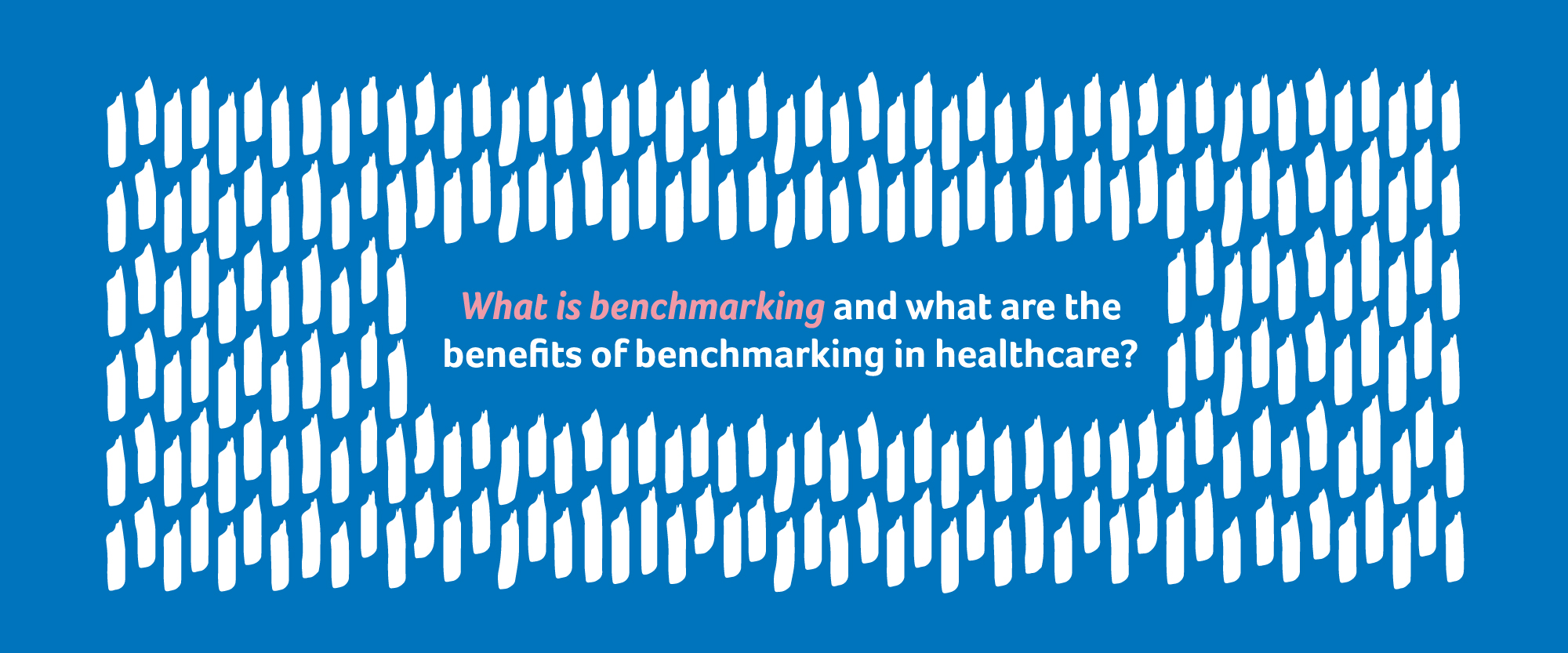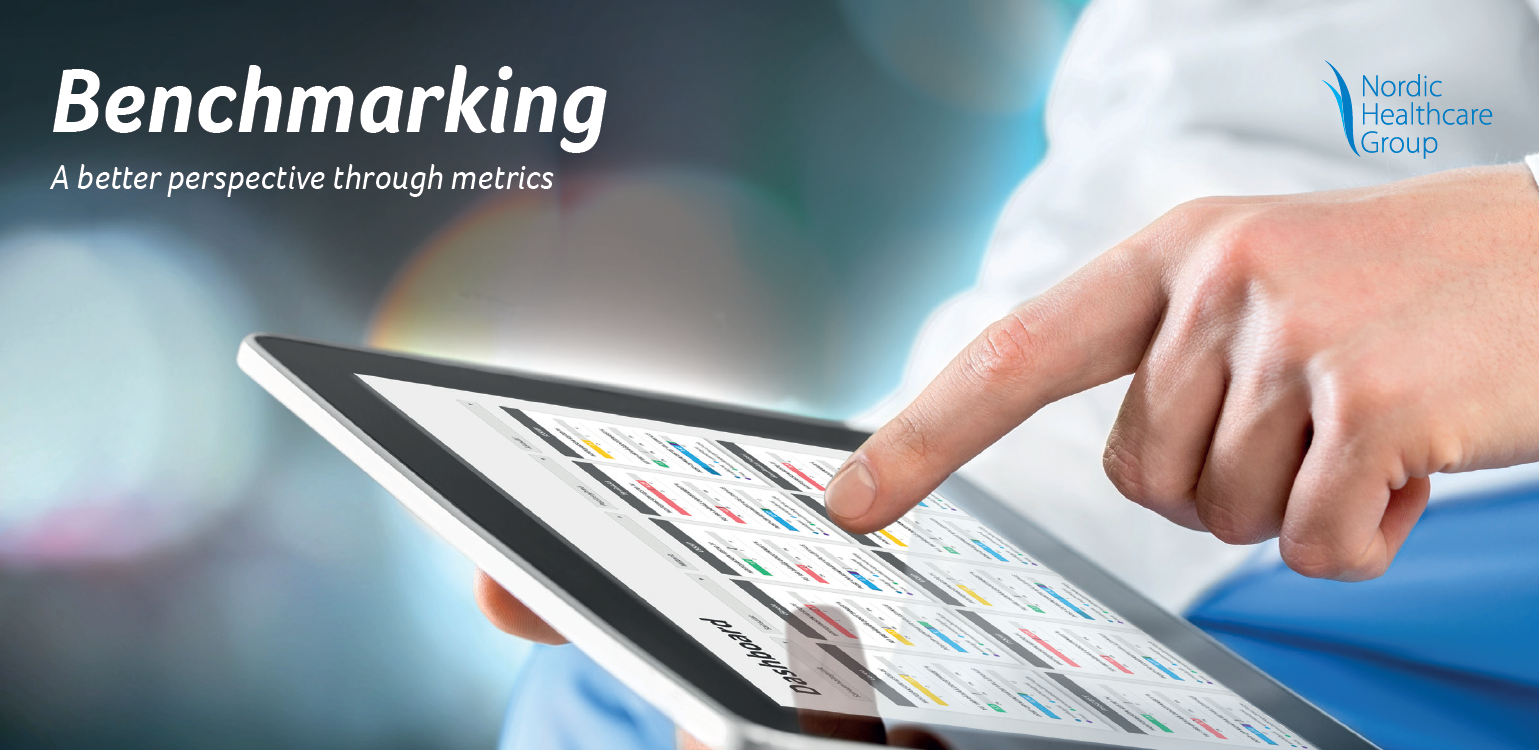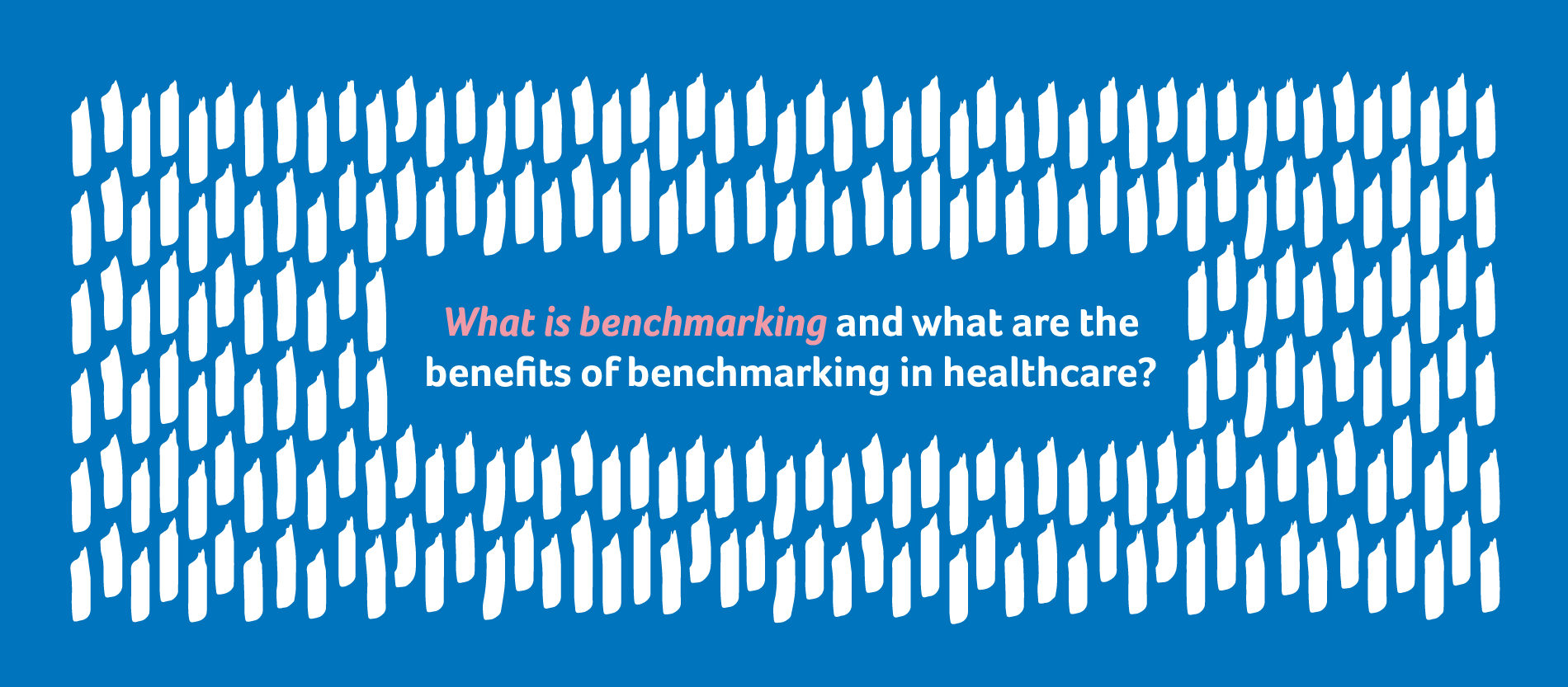
A webinar hosted by NHG brought together healthcare experts around the Nordics to share experiences
Benchmarking – improving practices by peer-to-peer development – is currently becoming the hot topic in healthcare internationally, which was also highlighted at the International Consortium for Health Outcomes Measurement’s ICHOM Congress 2020. In Finland, benchmarking in healthcare is already conventional, and, through this webinar, we at NHG wanted to give insight and enable discussion among clinicians by showcasing examples from Finland to Nordic colleagues.
In Finland, benchmarking peer-to-peer development has already been a practice during the last 10 years in specialized medical care, and also in primary care, elderly care, and dental care. Further, during 2020 benchmarking services have been piloted in social care as well. This shows that benchmarking is not only a tool for specialized medical care but can be utilized across the sector by finding the right metrics and key development areas shared by the participating organisations.
Benchmarking offers decision support based on long-term monitoring of activities and development, and makes it possible to compare factors such as quality, costs, productivity, and resources as well as supports the sharing of best practices across hospitals, sectors, and municipalities. In a 2018 survey conducted by Health Catalyst, 72% of executives felt that benchmarks are important (41%) or extremely important (31%) in identifying and prioritizing improvement opportunities. Only 5% of executives felt that benchmarks are not important and 44% wanted to see BM results quarterly.
In the webinar, focusing on spesialised medical care, some of Finland’s top experts in the field shared their experiences on how to get started with benchmarking, how to implement it, and what the benefits are. We had the pleasure to host Risto O. Roine, Professor in Neurology and Chief Physician, Division of Clinical Neurosciences, University of Turku and Turku University Hospital, Ari Palomäki, Professor, Medical Director at Kanta-Häme Central Hospital and Tampere University, Jyrki Jalkanen, Chief Physician, Head of Department, Central Finland Central Hospital, and Timo Koivisto, Chief Physician, Head of Department, Docent, Neurosurgery of Kuopio University Hospital Neuro Center.
The webinar was a lively discussion between the panelists and participants. We summarized the most important questions to a Q&A:
Is benchmarking suitable for specialist healthcare, only? Are some areas of healthcare more suitable for benchmarking than others?
Benchmarking and peer-to-peer development methods and tools can be used in different areas of expertise in specialist healthcare (NHG benchmarking groups include for example neurology, emergency department, internal medicine, gynecology, etc.) but benchmarking is also widely utilized in Finland in primary care, elderly care and dental care. Further, a new benchmarking group has been recently piloted in social care including services for children and families. It really comes down to finding the joint challenges and metrics and defining them together with the benchmarking group at the beginning of the process. In cases where data is extremely hard to get, it might be wise to reconsider if this area/unit is suitable for benchmarking at this point.
How do you get clinicians onboard? Do they want to compare? How have clinicians received benchmarking data?
In Finland, by our experience, clinicians have not been reluctant. Of course, motivating them is important. A vital factor to clinicians is the transparency of the results: through benchmarking data, you can have an overview of change, improvements, and cost-efficiency in your organisation. The online reports are very handy and often clinicians are very interested and want to improve their performance. Benchmarking results are also a way to bring together head nurses and head clinicians to make the system better.
The benchmarking groups are originated by clinicians and they build an inspiring discussion forum for them. It gives clinical directors the opportunity to meet twice a year colleagues from different hospitals or organisations and discuss best practices on a national level. Jointly, they also agree on projects to work on for the next years. The participants are innovative and active and not scared to compare results. Since hospitals are in Finland (and the Nordics) public and cannot choose clients, the competition is of a healthy nature.
Benchmarking is an investment to the hospitals/organisations. How quickly does it pay back?
According to clinicians’ experience in Finland, benchmarking is cost beneficial and pays back every year. It is a very useful tool when building up a comparison system. It is recommended to be involved in the benchmarking group for at least three years to see the development over time. According to Risto O. Roine’s estimate, the investment pays back multiple times, taking into perspective the small proportion of benchmarking costs compared to possible savings with expensive patients or by avoiding complications.
For example, in the neurosurgery benchmarking group, significant national differences in the care process and its effectiveness were found. The group made a deep dive into the root causes of the differences and found solutions to improve operations.
Data is recorded differently in the hospitals – how do you resolve this in order to benchmark results? Do clinicians consider the data valid?
It is true, that data is recorded differently in different hospitals/healthcare units so there is a need to unify data to be able to do benchmarking. One part of NHG’s benchmarking services is to obtain data in the format the organisation gathers it and to make the data comparable.
Clinicians in our benchmarking groups have considered data valid but a lot of effort is, of course, put into data validation and harmonisation. Sometimes there are inconsistencies and, therefore, a board of experts is needed to solve them.
Is case mix relevant in the process? How do you consider severity and comorbidity?
Benchmarking must be planned so that severity, comorbidity, and case mix can be taken into account. This is already possible through suitable registers, for example, in neurology in Finland, the MS registry can be used. Case mix can sometimes be very relevant in explaining the differences found. But optimally there should not be that much effect. Prevalence differences do explain some differences, too. But we need to concentrate on factors that we can control ourselves, and these are related to processes, mainly.
How to utilize peer-to-peer development? Is there a process to support that the best performance can be learned and implemented elsewhere?
The benchmarking groups are getting together twice a year to discuss results and share practices. Besides the extensive data analysis, the groups deep-dive into one or more topics chosen by the clinicians jointly in advance. The reporting events offer clinical directors a chance to meet colleagues from different hospitals/organisations and discuss best practices on a national level, regularly.
How do you get started? How can you agree upon aims?
Agreeing upon definitions, aiming at the same results, and trying to harmonise things in the benchmarking groups is an ongoing process. However, for the planning phase, a board of experts is needed to define the most important parameters needed at the beginning. It is important to note that one should not be afraid of differences, but rather see them as discussion openings and issues that can be resolved.
Are the experiences and practices from Finland transferable to other Nordic countries, e.g. Denmark?
Of course, local systems play a role and local characteristics must be taken into account. However, in the Nordics, we cannot select patients, and this is one reason why a similar benchmarking process is suitable in different Nordic countries. According to Ari Palomäki’s estimate, the Finnish benchmarking process for emergency departments is at least 80% suitable for other Nordic countries and, Timo Koivisto suspects that, for neurosurgery, the number could be even as high as 100%.
What is the future of benchmarking?
In the future, benchmarking is heading towards patient-recorded outcomes as well as quality and effectiveness. We already see this trend in new, starting quality and effectiveness benchmarking groups, for example in Finland in dental care, this is already a well-established group. We are moving from volumes to value. Process data and output data should, therefore, be analysed with outcome data and case mix of patients. Further, data processes will be more automatic in the future, which will enable the shift of focus. Also, in the future performance indicators will very likely be public.

